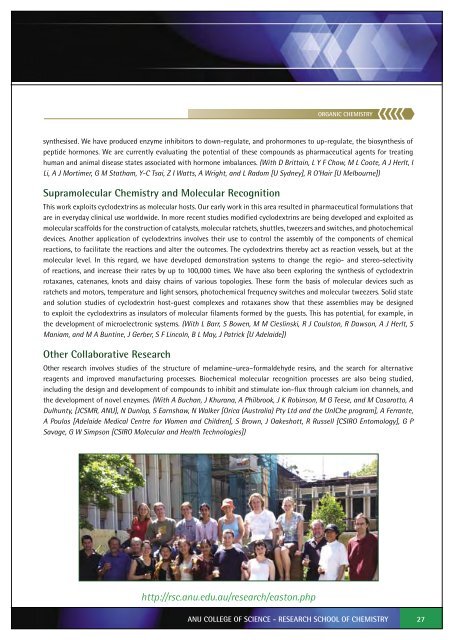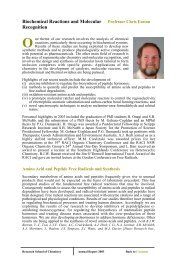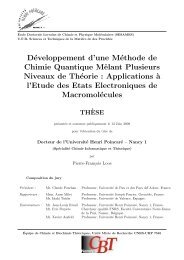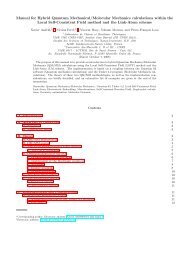View 2005 Report - RSC - Australian National University
View 2005 Report - RSC - Australian National University
View 2005 Report - RSC - Australian National University
Create successful ePaper yourself
Turn your PDF publications into a flip-book with our unique Google optimized e-Paper software.
ORGANIC CHEMISTRY<br />
synthesised. We have produced enzyme inhibitors to down-regulate, and prohormones to up-regulate, the biosynthesis of<br />
peptide hormones. We are currently evaluating the potential of these compounds as pharmaceutical agents for treating<br />
human and animal disease states associated with hormone imbalances. (With D Brittain, L Y F Chow, M L Coote, A J Herlt, I<br />
Li, A J Mortimer, G M Statham, Y-C Tsai, Z I Watts, A Wright, and L Radom [U Sydney], R O’Hair [U Melbourne])<br />
Supramolecular Chemistry and Molecular Recognition<br />
This work exploits cyclodextrins as molecular hosts. Our early work in this area resulted in pharmaceutical formulations that<br />
are in everyday clinical use worldwide. In more recent studies modified cyclodextrins are being developed and exploited as<br />
molecular scaffolds for the construction of catalysts, molecular ratchets, shuttles, tweezers and switches, and photochemical<br />
devices. Another application of cyclodextrins involves their use to control the assembly of the components of chemical<br />
reactions, to facilitate the reactions and alter the outcomes. The cyclodextrins thereby act as reaction vessels, but at the<br />
molecular level. In this regard, we have developed demonstration systems to change the regio- and stereo-selectivity<br />
of reactions, and increase their rates by up to 100,000 times. We have also been exploring the synthesis of cyclodextrin<br />
rotaxanes, catenanes, knots and daisy chains of various topologies. These form the basis of molecular devices such as<br />
ratchets and motors, temperature and light sensors, photochemical frequency switches and molecular tweezers. Solid state<br />
and solution studies of cyclodextrin host-guest complexes and rotaxanes show that these assemblies may be designed<br />
to exploit the cyclodextrins as insulators of molecular filaments formed by the guests. This has potential, for example, in<br />
the development of microelectronic systems. (With L Barr, S Bowen, M M Cieslinski, R J Coulston, R Dawson, A J Herlt, S<br />
Maniam, and M A Buntine, J Gerber, S F Lincoln, B L May, J Patrick [U Adelaide])<br />
Other Collaborative Research<br />
Other research involves studies of the structure of melamine–urea–formaldehyde resins, and the search for alternative<br />
reagents and improved manufacturing processes. Biochemical molecular recognition processes are also being studied,<br />
including the design and development of compounds to inhibit and stimulate ion-flux through calcium ion channels, and<br />
the development of novel enzymes. (With A Buchan, J Khurana, A Philbrook, J K Robinson, M G Teese, and M Casarotto, A<br />
Dulhunty, [JCSMR, ANU], N Dunlop, S Earnshaw, N Walker [Orica (Australia) Pty Ltd and the UnIChe program], A Ferrante,<br />
A Poulos [Adelaide Medical Centre for Women and Children], S Brown, J Oakeshott, R Russell [CSIRO Entomology], G P<br />
Savage, G W Simpson [CSIRO Molecular and Health Technologies])<br />
http://rsc.anu.edu.au/research/easton.php<br />
ANU COLLEGE OF SCIENCE - RESEARCH SCHOOL OF CHEMISTRY<br />
27






